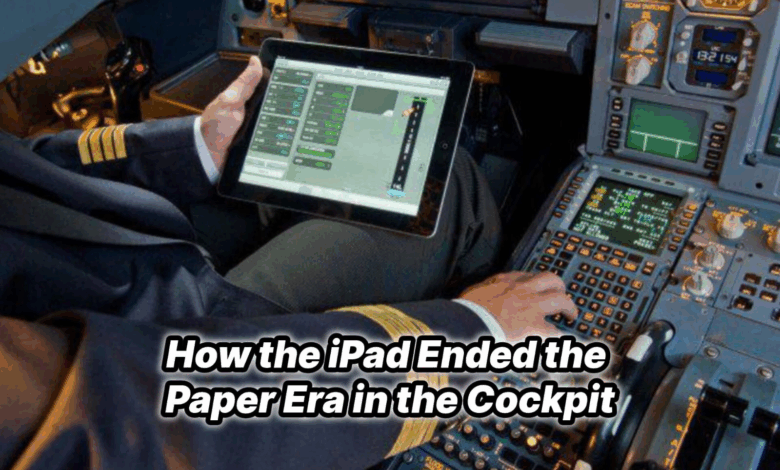How the iPad Ended the Paper Era in the Cockpit

In the past, a pilot’s cockpit could contain 15–20 kilograms of documents: navigation and approach charts, operational diagrams, checklists, Jeppesen manuals, and flight crew operating manuals (FCOM). All of this paperwork had to be manually updated every month. The arrival of the iPad in the cockpit quickly changed that.
The Electronic Flight Bag (EFB) is a digital flight bag that consolidates all operational documents and calculations a pilot needs into a single tablet. Navigation charts, checklists, flight briefings, and performance calculations are instantly accessible and continuously updated.
With the adoption of EFBs, operational efficiency has increased significantly. Updates became automatic, and takeoff and landing performance calculations can now be done in seconds. The ability to track the aircraft’s position on the tablet while taxiing provides major convenience to cockpit crews, especially at large airports. Less paperwork leads to a more organized cockpit and a lower risk of errors.
Airbus made tablet use standard in 2015. After 2022, paper usage in operational documents largely disappeared, and performance tables and calculations moved entirely to the EFB. On new-generation aircraft like the A350 and B787, the system is integrated as a cockpit screen and becomes part of the avionics.
Today, the EFB is a core operational tool for pilots. Paper-stuffed flight bags are now a thing of the past. The next step is expected to be full integration with the aircraft, enabling direct data exchange with the FMS and turning the EFB into a complete digital cockpit assistant.



